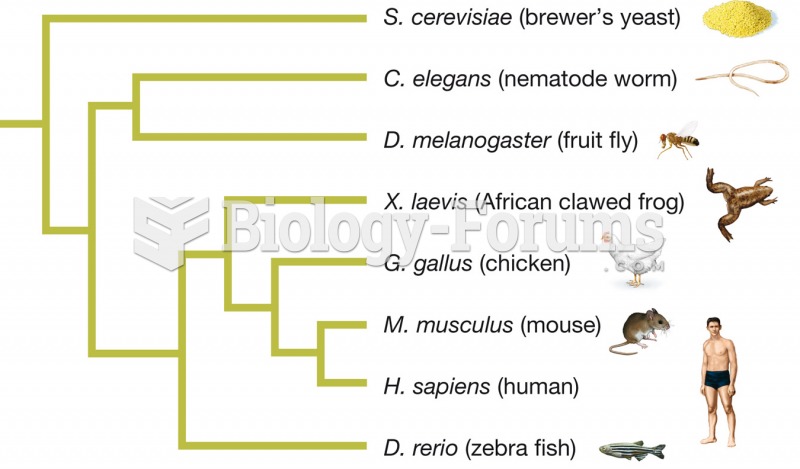|
|
|
The Centers for Disease Control and Prevention (CDC) was originally known as the Communicable Disease Center, which was formed to fight malaria. It was originally headquartered in Atlanta, Georgia, since the Southern states faced the worst threat from malaria.
Cytomegalovirus affects nearly the same amount of newborns every year as Down syndrome.
There are more bacteria in your mouth than there are people in the world.
Between 1999 and 2012, American adults with high total cholesterol decreased from 18.3% to 12.9%
IgA antibodies protect body surfaces exposed to outside foreign substances. IgG antibodies are found in all body fluids. IgM antibodies are the first type of antibody made in response to an infection. IgE antibody levels are often high in people with allergies. IgD antibodies are found in tissues lining the abdomen and chest.







